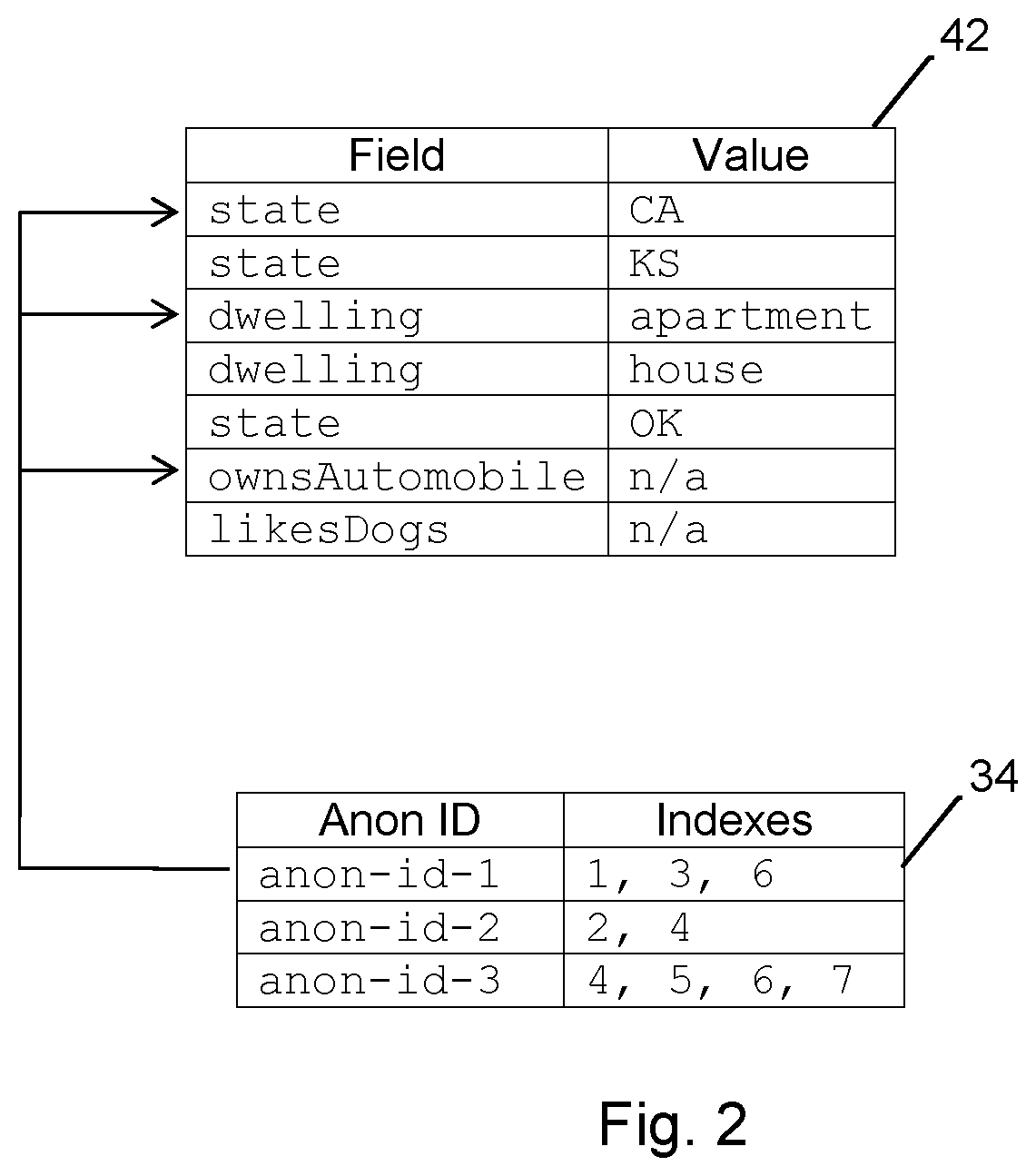Reducing duplicate data
a technology of duplicate data and data, applied in the field of reducing duplicate data, can solve the problems of enormous waste of transmission bandwidth and digital storage, publishers often do not have the necessary data about their viewers in order to accurately target messages, and marketing services providers cannot simply allow the sharing of data between these entities, so as to reduce duplicate data, eliminate duplicate data, and reduce duplicate data
- Summary
- Abstract
- Description
- Claims
- Application Information
AI Technical Summary
Benefits of technology
Problems solved by technology
Method used
Image
Examples
Embodiment Construction
)
[0023]Before the present invention is described in further detail, it should be understood that the invention is not limited to the particular implementations described, and that the terms used in describing the particular implementations are for the purpose of describing those particular implementations only, and are not intended to be limiting, since the scope of the present invention will be limited only by the claims.
[0024]As a preliminary matter, certain terms used in the description will be defined. The term “segment data” means any data that is useful for user targeting of marketing messages. This may include a single property, such as gender=male, or may mean a collection of all properties for a given consumer. The term “field / value pair” means a single segment data item, such as dwelling=apartment. Some fields carry a value by their presence alone and do not have an explicit value, such as likes-dogs. The term field / value pair is intended to also include these implicit-val...
PUM
 Login to View More
Login to View More Abstract
Description
Claims
Application Information
 Login to View More
Login to View More - R&D
- Intellectual Property
- Life Sciences
- Materials
- Tech Scout
- Unparalleled Data Quality
- Higher Quality Content
- 60% Fewer Hallucinations
Browse by: Latest US Patents, China's latest patents, Technical Efficacy Thesaurus, Application Domain, Technology Topic, Popular Technical Reports.
© 2025 PatSnap. All rights reserved.Legal|Privacy policy|Modern Slavery Act Transparency Statement|Sitemap|About US| Contact US: help@patsnap.com



